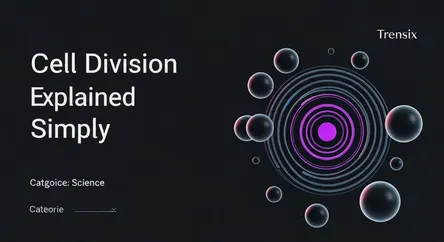Science
Cell Division Explained Simply

Discover the fundamental process of cell division. Learn how cells multiply for growth, repair, and reproduction, and its impact on human health.
What is it?
Cell division is the fundamental biological process by which a parent cell divides to form two or more daughter cells. It's the engine of life, enabling growth, repair, and reproduction. There are two primary types: mitosis and meiosis. Mitosis produces two genetically identical daughter cells and is crucial for an organism's growth, tissue repair, and asexual reproduction. Meiosis, on the other hand, is a specialized division that produces four genetically unique daughter cells (gametes, like sperm and eggs), each with half the number of chromosomes as the parent cell, which is essential for sexual reproduction.
Why is it trending?
Understanding cell division is at the forefront of modern medical research. Scientists study it intensely to unlock secrets about cancer, where cell division becomes uncontrolled. It's also central to advancements in regenerative medicine and stem cell therapy, which aim to repair or replace damaged tissues by guiding cell division. Furthermore, research into the cellular mechanisms of aging often focuses on how and why the efficiency of cell division declines over time, linking it directly to longevity and age-related diseases.
How does it affect people?
Cell division affects every aspect of human life. It's the process that turns a single fertilized egg into a complex organism. On a daily basis, it replaces old skin cells, heals cuts, and maintains our organs. However, when this intricate process goes wrong, the consequences can be severe. Uncontrolled mitosis leads to cancer, forming tumors that can invade tissues. Errors during meiosis can result in genetic disorders, such as Down syndrome, by causing an incorrect number of chromosomes in reproductive cells. Its proper function is essential for health, while its malfunction is a primary cause of disease.